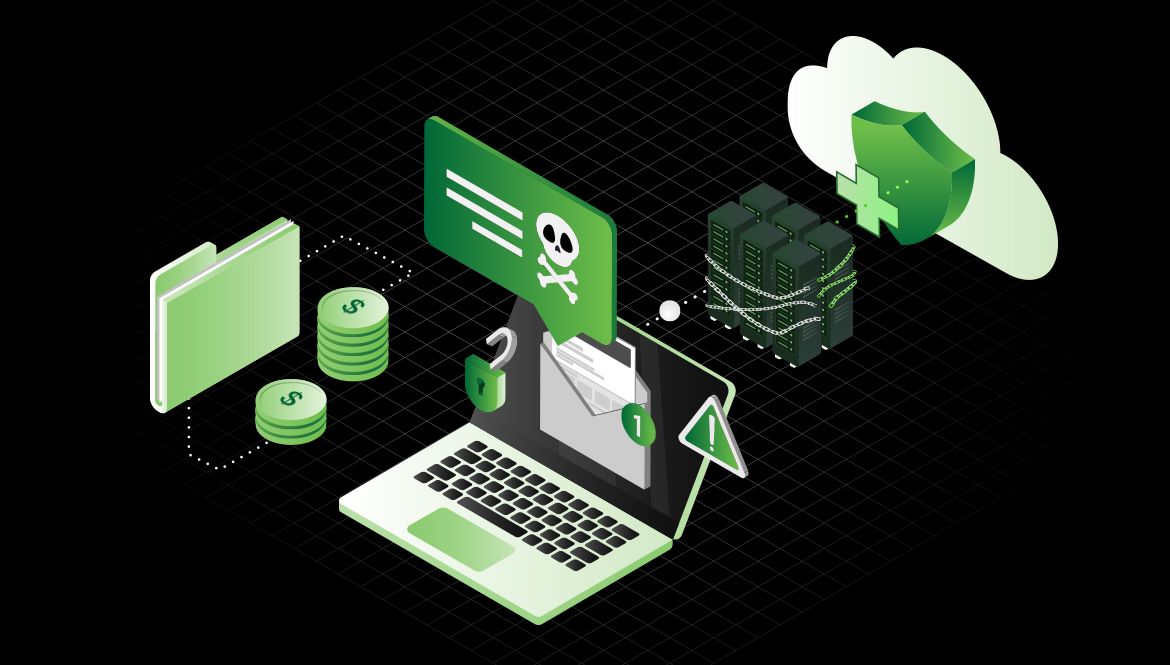1. Cyber thieves get more creative every day.
A successful cyberattack is every IT professional’s nightmare. With attacks becoming ever more frequent and sophisticated, and your data becoming more decentralized across remote workers, IoT devices, and a mix of on-premises and cloud locations, your data—and your business reputation and bottom line—are more at risk than ever.
In fact, a recent ZDNet article cites Cybersecurity Venture’s estimate of the global cost of ransomware attacks at more than $265 billion by 2031. The infamous Colonial Pipeline attack cost $4.4 million and disrupted U.S. fuel supplies.
2. Your data lives anywhere and everywhere.
Besides making your data harder to protect from cyberattacks, decentralized data requires more administrative effort to support ongoing business intelligence through analytics. That puts your business at a big disadvantage, when lack of 360-degree visibility into your operations means you can’t be as nimble or as confident as your competitors.
3. Data stuck in your warehouse does little good.
Putting data on tape that needs to be retained but not accessed and secured can support your archive requirements. But active backup data must be easily accessible if you want to get all that rich intelligence out of it. This requires a cost-effective, multi-tiered, on-premises and cloud backup strategy that gives you access to data when and where you need it.
4. Lost data can mean lost business.
A Gartner report cites the average cost of downtime, and it doesn’t paint a pretty picture. Gartner estimates the average cost at $5,600 per minute—or more than $300,000 per hour, depending on the business. One-third of the companies surveyed said one hour of IT downtime cost them between $1 million to $5 million. The costs of downtime are wide ranging — far beyond the monetary — and include losses in future value, productivity, reputation, productivity, and business opportunities.
5. You can’t keep up with data sprawl.
So many factors are creating data sprawl. The number of IoT and other sensors, more cameras with higher resolution, mobile compute applications, data analytics, cloud migration, and more are all contributing to the problem. If you have a comprehensive data protection strategy, you’re managing increasing amounts of data and planning for it. Scaling with a cloud-based storage-as-a-service solution can provide an efficient way to keep up with costs.
6. You’re getting nickel and dimed on your cloud storage costs.
Most cloud storage providers used for backup charge for API calls and data egress, which can add up to a lot of money over time. In some cases, the API charges can be higher than the actual storage costs. Not to mention that those fees are unpredictable, since your business has different data accessibility needs every day. If you’re like most enterprises, you’ve probably encountered cost overages already.
7. One choice is not a choice.
The different components of your IT infrastructure have different management needs, including backup and restore. If you have vendor lock-in, you’ll be forced to use whatever that vendor offers. The best solution for your business is the one that lets you decide what will work for you, allowing you to mix and match best-in-class solutions.
8. You can’t manage the growing web of services.
Hybrid IT environments are the most common architectures today, with data living in your data center, in one or more public clouds, and in private clouds — as well as on different media. Managing the different backup services for each environment will grow to become your team’s full-time job unless you can simplify all your backup under one centralized digital repository.
9. Your data isn’t working for your business.
Only 32% of the average enterprise’s data is being leveraged for business insights, according to Seagate’s Rethink Data report. Imagine what you could do if you could consolidate that data and make it accessible for data analytics that can drive business innovation and growth.
Storage as a service can slay all your backup dragons.
Including an efficient, on-demand, scale-out storage solution with predictable costs to your existing backup infrastructure enables a complete active and intelligent data backup solution. To learn more about how you can simplify backup, and do it cost-effectively, check out our eBook, 9 Enterprise Backup Challenges and How to Overcome Them.











